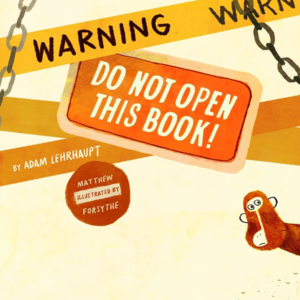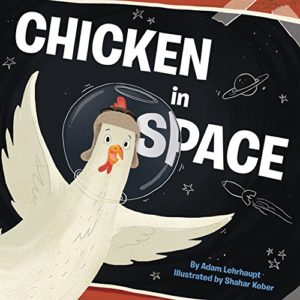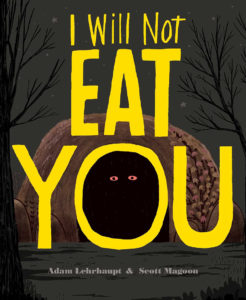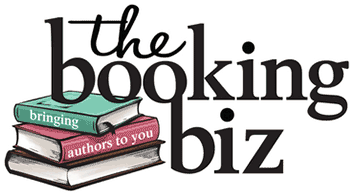Picture book author Adam Lehrhaupt knows a lot about building creativity. He grows stories from the smallest sparks of ideas to tell tales of a chicken in space, a book that begs to not be opened, words that play and more.
That’s why, when Adam said he could write a guest post for us about creativity, we knew we’d be in good hands.
Take it away, Adam…

Even an extremely creative person has days when they can’t come up with an idea, visualize the next step in a project, or even pick the next word in a sentence. Those days when working on a project seems like trying to roll Sisyphus’ rock up the hill. I have them more often than I’d like to admit.
They can be frustrating.
They can be infuriating.
They can cause you to hate what you’re doing.
As an adult, I like to think I have the perspective to look at these situations and understand that things will get better. That I’m only having a temporary setback. One that may last for a while, but something I can overcome. Because I’ve overcome setbacks before.
For a child, these experiences can be more daunting. They may not be able to see past their difficulties. And this can lead to resistance or even a dislike for the activity. It can put a barrier in place the next time they are asked to do it.
Whether it’s writing or another creative pursuit, we don’t want to make any barriers. We want to make being creative as fun, simple, and accessible as possible. We want to find ways to break down those barriers.
In my school visits on ideas and creativity, I run audiences through a number of fun exercises to help them connect to their creative sides. Simple things that anyone can do to foster a bit of creative play from pre-K through adult.
With that in mind, I’ve put together a list of 7 ways to use books to spark creativity.
- Step into a new world and play around
 One of the things I like about books is that they transport you into another world. A really good book draws you in, creates a believable setting, and allows you to live there for the duration. In my books Warning: Do Not Open This Book and Please, Open This Book, I wanted the reader to become part of the book, part of the story. In both books, the reader sets the monkeys free by opening the book and turning pages. The reader becomes part of the story.
One of the things I like about books is that they transport you into another world. A really good book draws you in, creates a believable setting, and allows you to live there for the duration. In my books Warning: Do Not Open This Book and Please, Open This Book, I wanted the reader to become part of the book, part of the story. In both books, the reader sets the monkeys free by opening the book and turning pages. The reader becomes part of the story.
But you can do this with any book, once you’ve entered the world of the story. What other stories do you think could happen in this world? Can you create a new character that might live there? How would the other characters react to them?
- Take a character out for a spin
In my school visit on character I talk about Theodore, the main character in my book I Will Not Eat You. In order to understand Theodore, we look at characters in other books. We discuss who they are. We figure out what they want, and more importantly, what they really need. In looking at these other characters, essentially trying on their skins, we get to know Theodore.
Once we understand the wants and needs of Theodore we are ready to create new stories for him. What will he do in your story? Do you have a favorite character? What adventures might they go on?
- New solutions to old problems
 In Chicken in Space, Zoey wants to go to space but doesn’t have a ship. This is a problem. Every story has at least one problem that a character needs to solve. Pick a favorite book. What problem does the character face? Use the below checklist to create a new way to think about your problem. It uses action verbs to stimulate ideas and creative thinking. These verbs help foster idea generation and get you prepped to think about the action.
In Chicken in Space, Zoey wants to go to space but doesn’t have a ship. This is a problem. Every story has at least one problem that a character needs to solve. Pick a favorite book. What problem does the character face? Use the below checklist to create a new way to think about your problem. It uses action verbs to stimulate ideas and creative thinking. These verbs help foster idea generation and get you prepped to think about the action.
- Substitute: What can be substituted?
- Combine: What can be combined or brought together?
- Adapt: What can be adapted to provide a solution?
- Modify/minify/magnify: Can you change something in some way? What can be removed or added?
- Put to other uses: How can the use of something be changed, like Zoey does with the basket and balloons?
- Eliminate: What can be eliminated?
- Rearrange: What can be rearranged?
- What if…
Can you sum up the plot of a book in one sentence? For my book Wordplay, I wrote this: What if the parts of speech got into a fight on the playground. Try this with some of your favorite books. Use active words in your sentences where possible. Then come up with your own what if stories.
- Today in the news
Who wouldn’t want to try being a newscaster for a day? After reading a book, try presenting the story as a newscast, as if it had really happened. What ‘facts’ can you provide to your audience about the tale?
- Encourage risk-taking
 Everyone makes mistakes. Everyone fails. In books, movies, and in life. I fail at writing ALL the time. All. The. Time. It is good to familiarize ourselves with failure in a safe environment. We need to know that not only is it okay to fail, but sometimes failure is inevitable. Being creative takes courage and perseverance. Not every idea will be a good one. Not every idea will work out. And books are a great resource for thinking about this.
Everyone makes mistakes. Everyone fails. In books, movies, and in life. I fail at writing ALL the time. All. The. Time. It is good to familiarize ourselves with failure in a safe environment. We need to know that not only is it okay to fail, but sometimes failure is inevitable. Being creative takes courage and perseverance. Not every idea will be a good one. Not every idea will work out. And books are a great resource for thinking about this.
How do some of our favorite characters fail? What mistakes do they make? Do they take risks? When we write, or do some other creative activity, are we taking a risk? If not, encourage it. It just might lead to something genius.
- Speed dating your reads
This works best with a larger group, but the concept is an easy one. Everyone matches up with a partner and each person has 1 minute to sell the other one on why they should read their book. After 2 minutes you switch partners and start over. For added fun, have a vote at the end to see which book more people now want to read.
And, because all this talking about being creative has got my brain going, here are 4 bonus ideas to foster even more creativity!
Evolving Art and Stories
Form into groups of 6-8. Each participant privately writes the first 2-3 sentences of a story. Then, they pass their draft to the person on the right. Participants develop or add to the story passed to them and then pass it on in turn.
Prone to Exaggeration
Provide participants with the outline of a story or fairy tale. Then ask them to develop ways of exaggerating it and make it an even bigger or smaller story.
Become a Character for a Day
Each participant takes on the role of one of the characters in a book. Then they act out scenes as if they were that character.
Invite an Author for a School Visit
What helps spark creativity more than bringing a creative person in to share their knowledge? Author visits can provide weeks of activities both before and after the presentation.
Learn more about Adam Lehrhaupt’s books and author visits on his speaker page.
